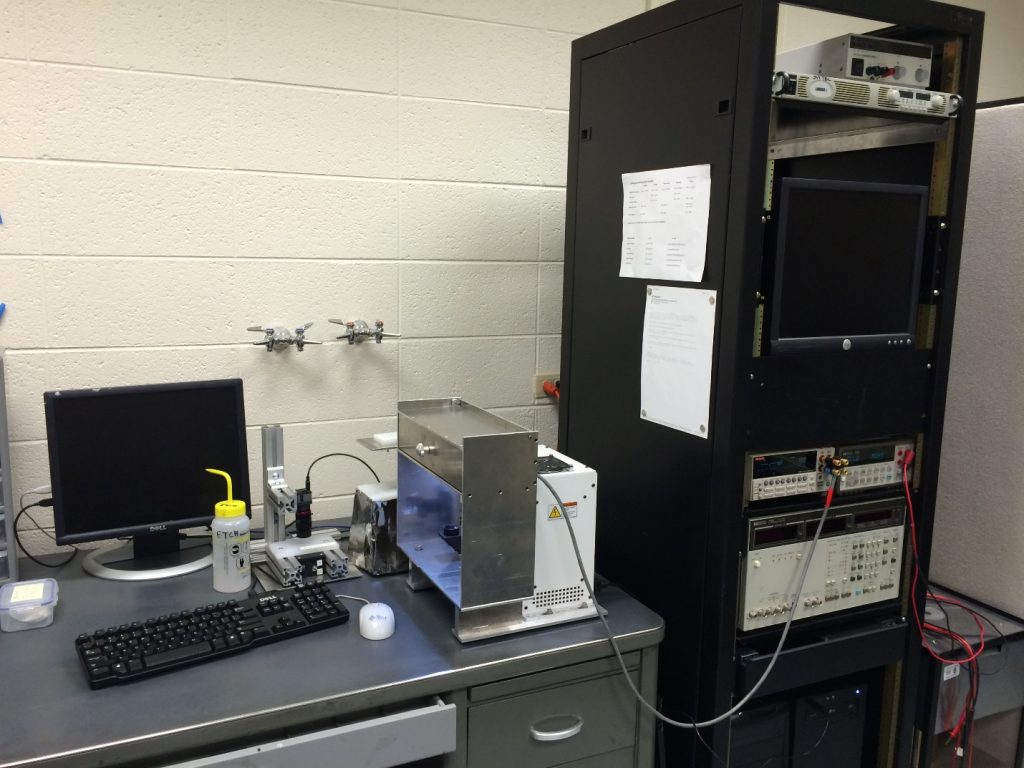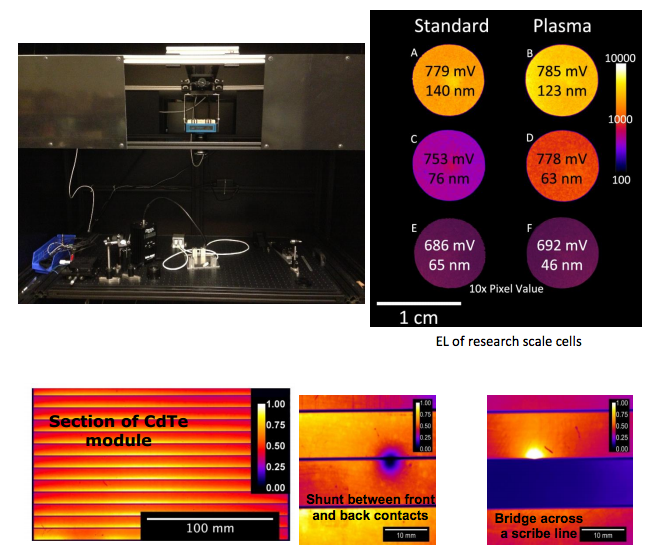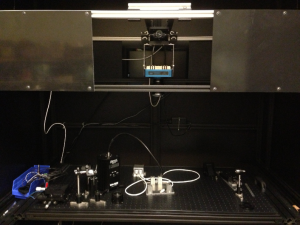J-V Tester
These capabilities are focused on fast, accurate measurement of CSU cells in the standard configuration. A dedicated camera is programmed to measure cell area with high accuracy. A Keithley sourcemeter can control current and measure bias on the cells, while an ABET solar simulator with AM1.5 filter and uniform illumination provides light for accurate current measurements. Capacitance-voltage measurements are made with a HP4192A impedance analyzer. An Ocean Optics USB4000 along with a light source featuring halogen and deuterium light sources provides accurate transmission and reflection data from 350-1100 nm. The spectrophotmeter system can be used to calibrate layer thickness and band gap values, and analyze cells and layers for optical losses.
Electroluminescence (EL)*
Electroluminescence is the process in which injected charge carriers recombine radiatively within a device. The most common example of this is the operation of an LED (Light Emmitting Diode). At its core, a solar cell is also a diode, but optimized to turn light into energy. However, the reverse of this process can be done with a solar cell, and spatially resolved images of cell performance can be obtained using a camera sensitive to the emitted light. The EL system in Physics Department at Colorado State University was designed for versatility in these measurements. It boasts an 8 mega-pixel, cooled Silicon CCD camera, allowing for a resolution as high as 2 µm/pixel, and a sensitivity to EL from a range of devices with bandgaps as low as 1 eV. The box was designed to handle Small Area Devices (SADs) around 1 cm2 to full area modules up to 2 ft x 4 ft. Given is an example of 6 different CdTe samples made at the PV manufacturing lab. The Open Circuit Voltage is overlain to demonstrate the EL intensity dependence on voltage. The approximate CdS voltage is also included here.
Light Beam Induced Current (LBIC)*
Light Beam Induced Current is a measurement technique that scans a sample using a finely focused beam of light, resulting in a spatially resolved map of local quantum efficiency in a device. The LBIC system in Physics Department at Colorado State University has four different available wavelengths for these measurements: 850 nm, 830 nm, 638 nm, and 405 nm. Each allows different depths in an SAD to be probed for detailed information about the window layer or absorber. The LBIC images of cells E and F presented in the EL images is included here. It is clear to see the differences in both biased and unbiased measurement techniques.
*These measurement tools are developed and operated by Colorado State University’s Photovoltaic Group in the Physics Department.




